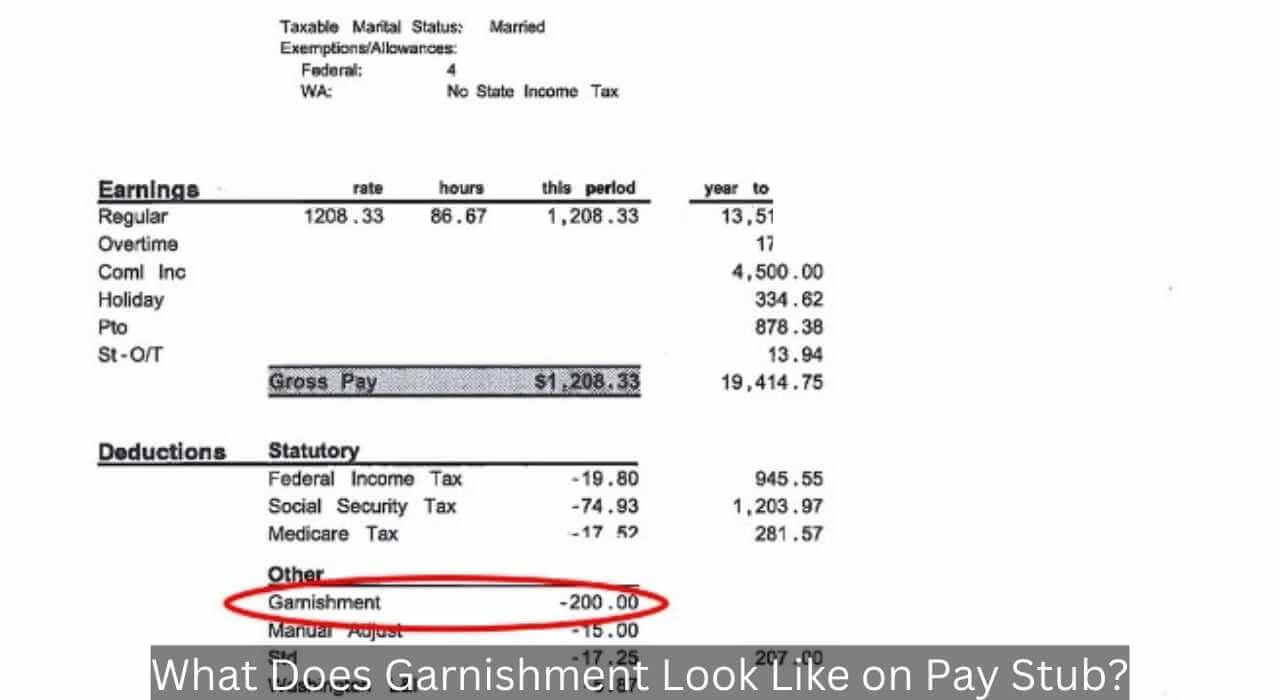What Does a Garnishment Look Like on a Pay Stub?
A garnishment is a court-ordered deduction from your wages after you miss payments. The garnishments listed on your pay stub are critical for understanding how much money you'll have to give up as repayment for a debt.
This comprehensive guide will help you identify and understand the different garnishments.
Also, you will understand how they affect your pay. With this knowledge, you can confidently review your pay stub and ensure deductions are correct.
What is Wage Garnishment?
Wage Garnishment is a legal process by which a creditor can collect money from a debtor's wages. This happens without the debtor's permission. The creditor must present the garnishment order to the debtor's employer or bank and provide proof of the debt. After that, the employer or bank holds a portion of the debtor's salary to pay back the debt. Generally, garnishment requires a court order and is used to satisfy a judgment against the debtor.

What Does a Garnishment Look Like on a Paystub?
After confirming a debt, the individual involved will receive a garnishment order from the court. Afterward, they will observe a new entry tagged as "garnishment" on their subsequent pay stub. The entry will show the amount deducted from the individual’s salary. However, you should be familiar with paystub abbreviations so you can quickly identify the garnishment entry on your pay stub.
Garnishment Laws
You must receive advance notice. The Fair Debt Collection Practices Act (FDCPA) states that you should receive a notification at least 30 days before deductions start. This gives you a chance to take action to avoid the garnishment, such as paying off the debt in full or disputing it. Below are some of the most common garnishment laws.
You can negotiate the conditions. If a garnishment process begins, you can fight it and offer proof that the debt value is incorrect. You can dispute the debt with the company that has issued the garnishment or calculate social security taxes with the government agency involved.
Types of Wage Garnishment
Wage garnishment is a legal process. The employer holds a small percentage of an individual's earnings to repay a debt. There are several types of wage garnishment. The common types are:
- Tax levy
- Child support garnishment
- Bankruptcy garnishment
- Student wage loan garnishment
- Court-ordered wage garnishment.
Wage Garnishment Example & Calculations
Let's look at an example to see how wage garnishment works. Consider having a child support payment of $400 per month, a student loan repayment of $300 per month, and a court fine of $100, and your gross income is $2,000 per month. Your net pay should be around $1,600.
Garnishment on your income can be as follows - child Support: $400 / 12 = ~$33 per month, student Loans: $300 / 12 = ~$25 per month, court Fine: $100 / 12 = ~$8 per month Total: $58 per month Your take-home income would be $1,600 - $58 = $1,542 per month.
When Does a Wage Garnishment Apply?
Wage garnishment happens when a debtor has failed to make payments. It is granted when the creditor has exhausted other options, like sending late payment notices and making phone calls. This court-ordered action requires an employer to follow the mandated procedure in calculating gross wages and withhold a specific percentage of an employee's wages from forwarding them to the creditor until the debtor repays what they owe in full. The value removed to repay the debt depends on federal and state laws.
Which Wages Can Be Garnished?
Here are the common income sources. We indicated which ones are open for payroll garnishments -
- Wages: This includes income from an hourly job and salaries.
- Fringe Benefits: This includes health insurance, retirement benefits, and life insurance.
- Pensions: The government usually makes these payments, so they cannot be garnished.
- Social Security Benefits: These payments cannot be garnished.
How Much of Your Wages Can Be Garnished?
Below are the percentage payroll deduction amounts and how to calculate pay stub deductions, according to the Department of Justice. 10% of your disposable income if you earn below $150 per week. 15% of your disposable income if you earn between $150 and $300 per week.
Also, they can garnish up to 25% of your disposable income if you earn more than $300 per week.
What Are the Maximum Wage Garnishment Amounts?
The maximum wage garnishment amount varies depending on the type of garnishment. Below are the top wage garnishment amounts. Back Taxes: 100% Child Support: No quantity maximum Student Loans: 15% of your disposable income Court Fines: No maximum amount
Special Cases
You can ask the court to stop your garnishment if you are struggling financially. However, you must provide proof that the garnishment is causing a financial problem.
Another special case is when you're facing a crisis. For example, you can apply for a garnishment reduction during a medical emergency or a reduction in your working hours. And when you're on public assistance or disabled, you may be exempt from garnishments.
Frequently Asked Questions (FAQs)
- What is a garnishment in payroll?
Garnishment in payroll is the legal process of taking a portion of an employee's wages to satisfy an unpaid debt. Garnishment is typically used as a last resort when the creditor cannot collect the debt through other methods.
- What to do when you get a garnishment judgment?
Dealing with the creditor may also involve finding out if they are willing to accept a settlement amount less than the original debt. If the negotiation is successful, you should make a payment plan or settlement agreement and make payments on time.
- When to start garnishing employee wages?
Garnishment of wages should begin immediately after the employer receives the court order. The law typically requires the employer to start deductions following the legal ruling. Depending on the state, this can happen within days or weeks.
- When to stop garnishing employee wages?
Generally, employers must stop garnishing employees' wages when they have finished paying the debt in full or when the garnishment order ends. However, depending on the type of debt and the applicable state laws, there may be other circumstances in which employers must stop withholding wages from an employee's paycheck.
- How do I check the wage garnishment balance?
You can check your wage garnishment balance by contacting your employer or the creditor who initiated the garnishment. Your employer should have records of the garnished amounts and be able to provide you with an updated balance. You can also request a copy of your current balance.
Final Thoughts on Garnishment on a Pay Stub
Now, you know more about payroll garnishments, wage garnishment tracking, examples, and wage attachments and garnishments. It is essential to avoid these conditions. Garnishments may have a negative impact on your credit score. Also, it puts a strain on your final income. Regardless of any garnishment order, your employer must follow the legal provisions to ensure the process is proper.
Kristen Larson is a payroll specialist with over 10 years of experience in the field. She received her Bachelor's degree in Business Administration from the University of Minnesota. Kristen has dedicated her career to helping organizations effectively manage their payroll processes with Real Check Stubs.

